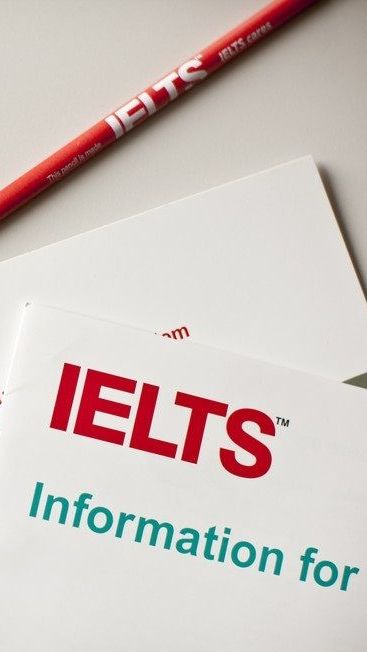18.10.2023
Effective strategies for IELTS writing and reading preparation


Effective strategies for IELTS writing and reading preparation

A significant portion of the IELTS exam that many candidates find daunting is the Writing section. This section is divided into two parts: Part 1 involves describing visual data such as graphs, tables, bar charts, or diagrams, while Part 2 requires an extended discursive piece where candidates express their opinions on a given issue. The total allotted time for both tasks is one hour, with recommendations to spend approximately 20 minutes on Part 1 and 40 minutes on Part 2.
Part 2 is particularly crucial as it accounts for two-thirds of the total marks. Therefore, starting with this section might benefit many students. In this part, candidates must not only showcase their writing abilities but also carefully think about their ideas, how to structure them effectively, justify their viewpoints, provide relevant examples or comparisons, and formulate a concluding statement.
While Part 1 is shorter, I personally believe that twenty minutes should suffice for its completion. The key here lies in utilizing appropriate language to accurately present and compare the data given.
For both writing tasks, students should organize their work logically, ensuring a clear introduction and conclusion are present. It is essential to remember to use paragraphs effectively and apply cohesive devices to link them smoothly. Furthermore, demonstrating a wide range of vocabulary and various language structures enhances the quality of the writing. Prior to the exam, many students find it beneficial to engage in focused vocabulary exercises, practice writing sample prompts, discuss their responses with an instructor, and revise their work. Analyzing sample answers also aids in acquiring valuable vocabulary and developing effective strategies for tackling the tasks.
In the Reading Module of the IELTS exam, candidates encounter three passages, which together contain 40 questions. You will have a total of one hour to complete this section, so it is advisable to allocate no more than 20 minutes to each passage. Once the 20-minute mark has been reached, it is time to move on to the next passage. This approach maximizes your ability to address as many questions as possible. Typically, students are advised to scan the passage initially before addressing the questions. However, it can be more efficient to review the questions first, which allows for targeted reading.
Certain questions are designed to test your vocabulary skills, specifically through synonyms and antonyms, making it beneficial to practice vocabulary exercises relevant to IELTS. Others focus on assessing your grasp of specific grammatical structures. Many students find the Yes/No/Not Given type questions particularly challenging, while others struggle most with identifying the main idea of a passage. It is generally recommended that candidates pinpoint their weaknesses early in their preparation and concentrate on improving in those areas.
In conclusion, succeeding in the IELTS exam is indeed a demanding endeavor that requires serious attention and a substantial time commitment during preparation. Nonetheless, employing effective strategies and techniques can greatly enhance your chances of success. Happy studying!
Part 2 is particularly crucial as it accounts for two-thirds of the total marks. Therefore, starting with this section might benefit many students. In this part, candidates must not only showcase their writing abilities but also carefully think about their ideas, how to structure them effectively, justify their viewpoints, provide relevant examples or comparisons, and formulate a concluding statement.
While Part 1 is shorter, I personally believe that twenty minutes should suffice for its completion. The key here lies in utilizing appropriate language to accurately present and compare the data given.
For both writing tasks, students should organize their work logically, ensuring a clear introduction and conclusion are present. It is essential to remember to use paragraphs effectively and apply cohesive devices to link them smoothly. Furthermore, demonstrating a wide range of vocabulary and various language structures enhances the quality of the writing. Prior to the exam, many students find it beneficial to engage in focused vocabulary exercises, practice writing sample prompts, discuss their responses with an instructor, and revise their work. Analyzing sample answers also aids in acquiring valuable vocabulary and developing effective strategies for tackling the tasks.
In the Reading Module of the IELTS exam, candidates encounter three passages, which together contain 40 questions. You will have a total of one hour to complete this section, so it is advisable to allocate no more than 20 minutes to each passage. Once the 20-minute mark has been reached, it is time to move on to the next passage. This approach maximizes your ability to address as many questions as possible. Typically, students are advised to scan the passage initially before addressing the questions. However, it can be more efficient to review the questions first, which allows for targeted reading.
Certain questions are designed to test your vocabulary skills, specifically through synonyms and antonyms, making it beneficial to practice vocabulary exercises relevant to IELTS. Others focus on assessing your grasp of specific grammatical structures. Many students find the Yes/No/Not Given type questions particularly challenging, while others struggle most with identifying the main idea of a passage. It is generally recommended that candidates pinpoint their weaknesses early in their preparation and concentrate on improving in those areas.
In conclusion, succeeding in the IELTS exam is indeed a demanding endeavor that requires serious attention and a substantial time commitment during preparation. Nonetheless, employing effective strategies and techniques can greatly enhance your chances of success. Happy studying!
